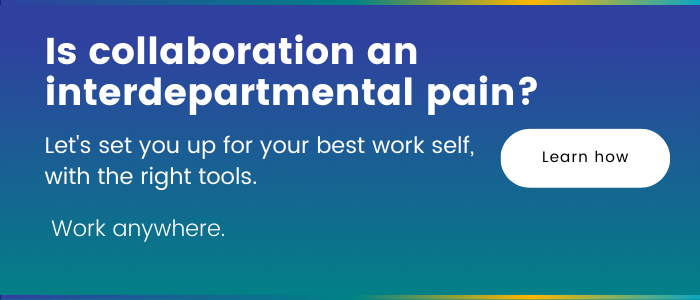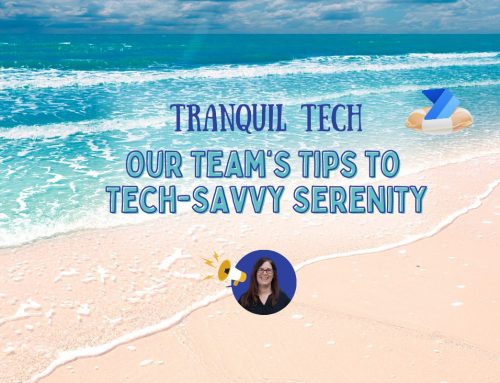Microsoft 365 Business Standard vs. Google Workspace Business Standard Plan
Migrating to a cloud office can be enough of a headache. It doesn’t help that both Microsoft and Google offer four different business license tiers. This five-part series will help you understand how Microsoft 365 plans compare to Google Workspace through a price and feature comparison of each license.
The first part gives an overview of what cloud office is and the flagship features offered by the top two market leaders. The second part uncovers that although Microsoft 365’s Business Basic plan is virtually the same price as Google’s counterpart, Microsoft offers more storage and capabilities. This article will determine if this remains true for the Business Standard plan.
6-part comparison of Microsoft 365 vs Google Workspace
- Flagship offerings of Microsoft 365 vs. Google Workspace
- Microsoft 365 Business Basic vs. Google Workspace Business Starter
- Microsoft 365 Business Standard vs. Google Workspace Business Standard
- Microsoft 365 Business Premium vs. Google Workspace Business Plus
- Microsoft 365 Enterprise E3/E5/F3 & Office 365 Enterprise E1/E3/E5 vs. Google Workspace Enterprise
- Microsoft 365 AI capabilities vs. Google Workspace AI capabilities
Reasons to consider the business standard license
The basic plan is best suited for small businesses that want all the standard applications and do not have a significant need for storage. The second tier, Business Standard, offers more storage and app capabilities. If you’re unsure which tier to go with, Microsoft and Google provide a free trial to test the plan out.
See below for a detailed pricing and feature comparison of the Microsoft 365 vs. Google Workspace Business Standard plan.
Pricing comparison
Below are monthly prices per user for a yearly subscription.

Sources: Microsoft’s pricing, Google’s pricing
Feature comparison

Sources: Microsoft 365 Business Standard Features, Google Workspace Business Standard Features
Callouts
Google offers a cheaper subscription than Microsoft. However, Microsoft’s plan includes access to more apps with richer functions.
Here are some major callouts based on the table comparison:
Desktop apps
Microsoft allows you to download the desktop version of their apps. This gives you access to more complex functions than Google Workspace’s web-based apps.
Storage
At first glance, Google provides more cloud storage per user with 2 TB, compared to Microsoft’s 1 TB. However, it’s important to note that Google includes the storage used by all its apps within the 2 TB limit. In contrast, Microsoft separates certain app storage from the total OneDrive cloud storage. For instance, Microsoft allocates 50 GB per user for email storage and additional space for file storage in Teams, and these allocations don’t contribute to the 1 TB OneDrive limit.
Teams vs. Google Meets and Chat
Microsoft Teams is a combination of Google Meets and Chat, with a clever implementation of ‘teams’ and ‘channels’ that allows for seamless collaboration across different groups. Besides this distinction in its user interface, Teams allows for 150 more participants than Meets with an additional webinar capability that includes attendee registration pages, email confirmations, and reporting.
SharePoint vs. Google Sites and Google Drive
SharePoint acts as an all-in-one intranet and document storage and management. It has excellent customization abilities that allow you to create a unique site and implement workflow automation. You can create files right within a site to be displayed on a page and shared with colleagues or customers. Google Sites, on the other hand, is more simplistic and offers themes and page templates. You have to create files and images in Drive to access them on Sites.
The bottom line is that Google Sites is great if you don’t need a document-sharing site and want a simple website. Otherwise, you miss out on SharePoint’s comprehensive document management and collaboration features.
OneNote vs. Keep
Keep’s interface is presented as a board of notes that you can stick to your to-do lists or reminders. In comparison, OneNote is designed as a notebook that can organize content into layers like different notebooks, sections, and pages. It is also equipped with more media functionalities like inserting files or tables.
Power Automate and Power Apps vs. AppSheet
Microsoft Power Automate is a low/no-code platform to help you build workflows, synchronize files, collect data, and more. Power Apps, on the other hand, lets you quickly build custom business apps with no coding required.
AppSheet is Google’s version of Power Apps and Power Automate, as it allows you to create web and mobile apps and automate workflows. AppSheet is known for having a straightforward and beginner-friendly interface. Power Apps and Power Automate have a much greater scope of functionality but come with a larger learning curve, which is more suited for advanced scenarios.
Clipchamp
Offered by Microsoft, Clipchamp allows you to edit videos using basic tools like trimming, cropping, and speed control. Google does not currently have a counterpart to this in their Business Standard license.
Loop
This Microsoft tool allows you to collaborate with workspaces that bring all the parts of a project from different Microsoft apps like Word or OneNote in one place. Google does not currently have a counterpart to this in their Business Standard license.
Should I choose the Microsoft 365 or Google Workspace Business Standard Plan?
Although Microsoft 365 is priced slightly higher than Google for this plan, the callouts show that the price difference is worth it for the additional apps and greater depth you get in Microsoft’s services compared to Google. The same conclusion can be reached here as per the previous article, where we looked at Microsoft 365 Business Basic vs. Google Workspace Business Starter. The Business Standard license for Google Workspace makes sense for you if you’re looking to meet the basic needs of your organization. Microsoft covers the basics and provides the tools you need to unlock greater productivity and collaboration across a growing workforce.
Next is the fourth part of this series, which will compare Microsoft 365 Business Premium vs. Google Workspace Business Plus. It’s noteworthy to mention that as you proceed through this series, you may notice a common pattern occurring. Google offers the same suite of apps throughout all license levels, with additional functionalities unlocked at each upgrade. Microsoft does this and introduces new apps to meet your business needs as you grow.
P.S. Did you know that if you purchase your Microsoft licensing through Creospark instead of Microsoft directly, we give your end users a 24/7 support line for free!
*Please note this article was published on March 20th, 2024, and the information may have changed since.*
- Microsoft 365 Copilot vs. Google Workspace Gemini - April 5, 2024
- Enterprise Plan Comparison Microsoft 365 vs. Google Workspace - April 1, 2024
- Microsoft 365 Business Premium vs. Google Workspace Business Plus - March 26, 2024
Related Posts
Subscribe our newsletter
Enter your email to get latest updates.
















